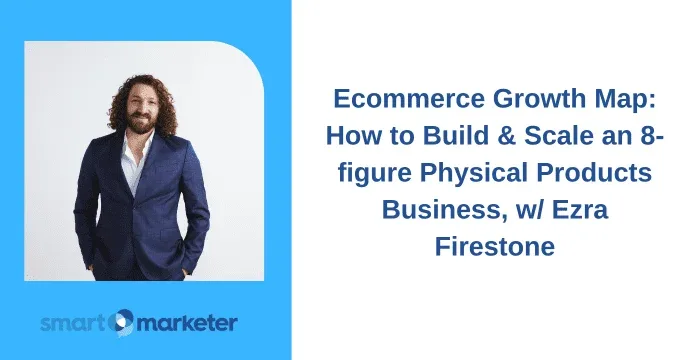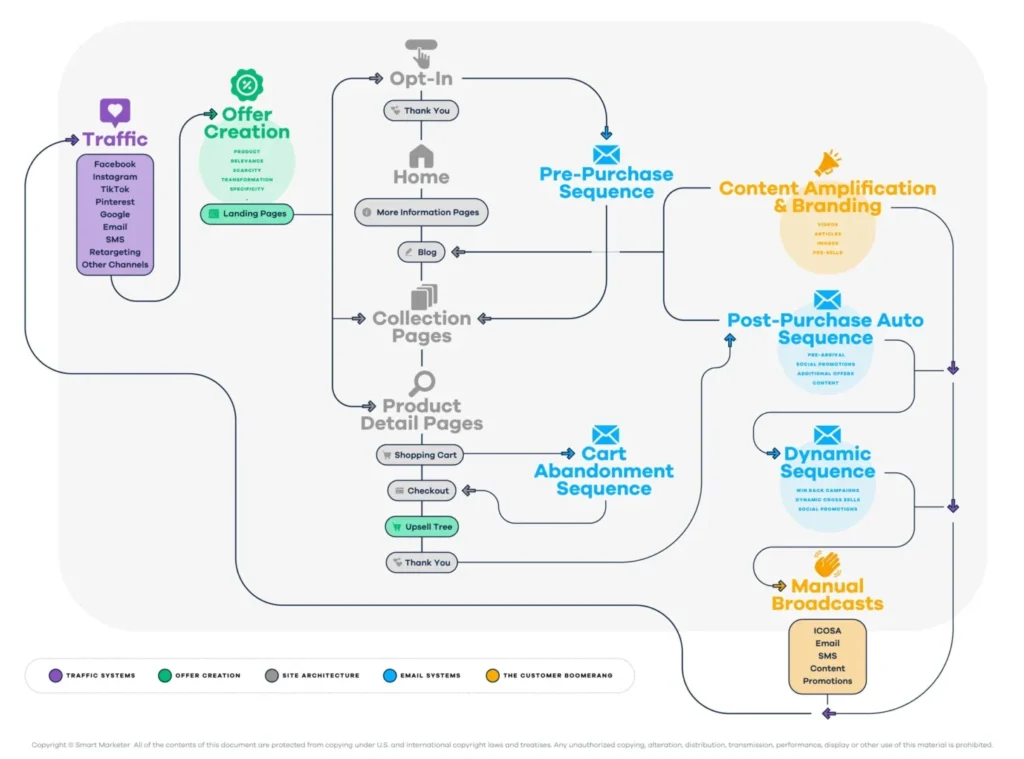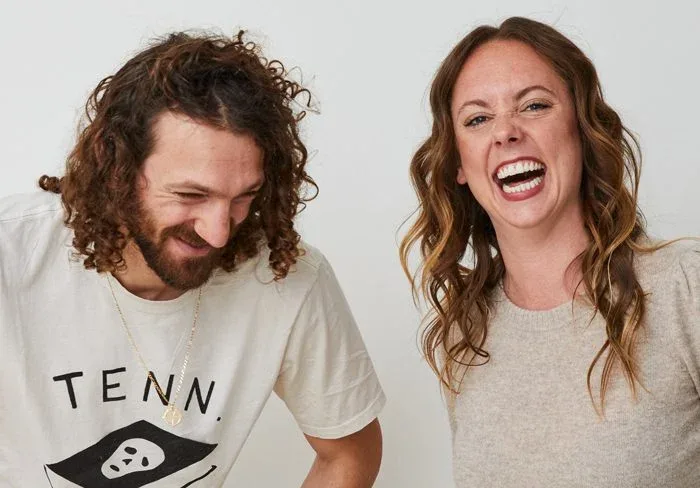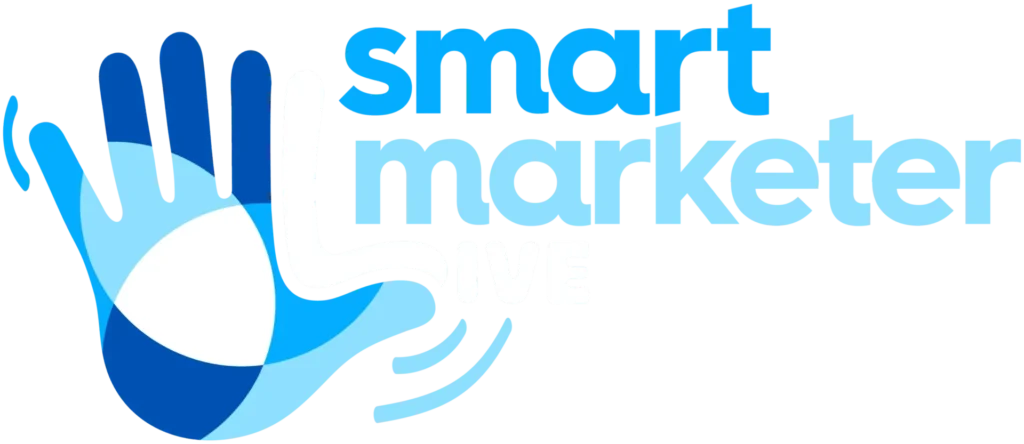With ecommerce, every step in your marketing funnel and every page on your website has a specific, targeted purpose: to move people along in the customer journey and eventually covert them into a buyer.
But how do you drive these conversions? And how do you put that success on repeat?
First, it’s important to understand that while ecommerce isn’t that different from traditional commerce, it’s also an entirely different beast.
You still have to build the same relationships, loyalty, and engagement — but here’s the catch: you have to do so without face-to-face interactions.
How?
That answer to that (and more) lies in the pivotal steps of our Ecommerce Growth Map.
Let’s dive in and check it out!
THE ECOMMERCE GROWTH MAP
At Smart Marketer, we’ve taken our years of experience in ecommerce and distilled it down into this Growth Map to show you what you need to set up and how it all works together.
So, let’s jump in and we’ll break it down section by section.
Website Architecture
First thing’s first: you have to create a website architecture – starting with the Homepage.
Every thread of your website will bungee off of this page, especially when linking to your Product and Collection Pages.
(Pro tip: To make the most of your Homepage traffic, hit your visitors with an “opt-in” offer right when they land on the page. This incentivizes them to provide their email in return for a discount or a piece of gated content. Then, you can follow up with this prospect to keep them engaged and nudge them toward a conversion.)
Then you have your Collection Page, which leads to your Product Pages where customers can make a buying decision.
Since the Product Page has a huge impact on conversions, you’ll want to optimize this page with content, descriptions and images that communicate the value of the product and encourage the customer to click the “Add to Cart” button.
Then you’re done, right?
Nope! Landing one sale is one feat, but then you want to put your customers into what I call
“The Customer Boomerang”. So, after checkout, create a Thank You Page that reengages them right away. (I explain this step in more detail later in the article.)
And there you have it — your site architecture:
Home Page » Collection Page » Product Page » Cart » Checkout » Thank You Page.
(You’ll likely have other ancillary pages like an About Us page, a blog, etc., but the architecture above has the main pages you need to optimize the customer journey.)
Offer Creation
Once your website architecture is set up and optimized with all the right assets, we need to create winning offers.
That’s because we’re not going to send our traffic directly to our website — we’re sending it to landing pages that are specifically optimized to nudge this cold traffic along in their customer journey.
(For more on creating offers, check out our CMO John Grimshaw’s post on his Winning Offer Formula.)
Next, a key part of your offers is your upsell tree.
The Upsell Tree
You should be offering upsells across your entire website — pre-purchase upsells on your product pages and in the Cart, and post-purchase upsells after someone buys.
But you want to focus on your post-purchase upsells in particular, because this is where you make most of your upsell revenue.
Upsells are a super important part of your offers because the better your upsells, the higher your average order value, the more profit you make and the more you can afford to spend to acquire a customer.
But let’s not get ahead of ourselves.
It doesn’t make any sense to drive traffic to these offers until you’ve set up an email system, so let’s tackle that next!
Email Systems
Most successful ecommerce business are going to produce 30–40% of their revenue through email.
Here are a few dynamic, behavioral email sequences that are vital to your email strategy.
Cart Abandonment Sequence
When someone abandons the shopping cart, it’s important we follow up to close the sale.
Something clearly struck a chord with them — they made it so close to making a purchase! — they just need a small push to complete their order.
With this email sequence, we simply follow up to remind them why they wanted to purchase in the first place, and maybe offer a limited-time discount.
Post-purchase Email Sequence
This is your opportunity to not only upsell and cross-sell, but to build a relationship with your new customer.
These are your “hype” emails.
They build excitement and anticipation for the product(s) the person just ordered, they showcase complementary products, and they establish loyalty that builds a returning consumer base.
Dynamic Sequences
These are a collection of email sequences based on specific customer behavior.
Like your “Win-back” sequence, where maybe you haven’t seen these customers in a while and you’re trying to re-engage them —
Or your “Bought X but not Y” sequence, where they ordered one product, but not another product that you know they’d love.
Pre-purchase Hotlist sequence
Remember the Homepage popup I mentioned earlier in the article? This email sequence is for the site visitors who opted in.
The purpose of this email sequence is to 1) Deliver whatever the person opted in for, and 2) Engage these users with some of your best content and offers in an attempt to convert them into a customer.
Traffic Systems
Now that you have the other pieces in place — a strong website architecture, phenomenal offers, and all of the most important email systems…
It’s time to set up your Traffic Systems!
Traffic comes from visibility sources like Facebook, Instagram, TikTok and Google (essentially, anywhere your audience exists).
We want to use paid advertising to drive people from those platforms to our cold and warm traffic landing pages, and eventually to our Product Pages to make a purchase.
Customer Boomerang
The Customer Boomerang refers to the content we send to our audience to keep them engaged and coming back for repeat purchases (like a boomerang!).
We send out content via:
- Manual email broadcasts
- Dynamic automations (like our Win-back flow)
- And even paid amplification
In paid amplification, we put our content on social media and we pay to amplify it to our fans, followers, subscribers and customers to keep them engaged.
That way, when we’re having a sale event or a product launch, they’re in our warm audiences on these platforms (so we can target them with the right messaging) and they’re more receptive to our offer.
The Customer Boomerang is the final piece of the system, and it’s arguably the most important.
Why?
Because it’s easy to get a customer once; it’s hard to geta customer twice.
And the better you can drive repeat purchases, the more successful your ecommerce business will be.
Final Thoughts
Ecommerce looks intimidating at first, but with enough practice and optimization, this Growth Map will become second nature to you.
Anytime you feel lost or stumped in the process, just come back to this resource to ensure you’re making all the right turns.
And if you’re still wondering how to implement these tips, Smart Marketer is here to help.
If you need us to point you in the right direction, just reach out to our team and we’d be happy to give you a hand.
Thanks for reading!






